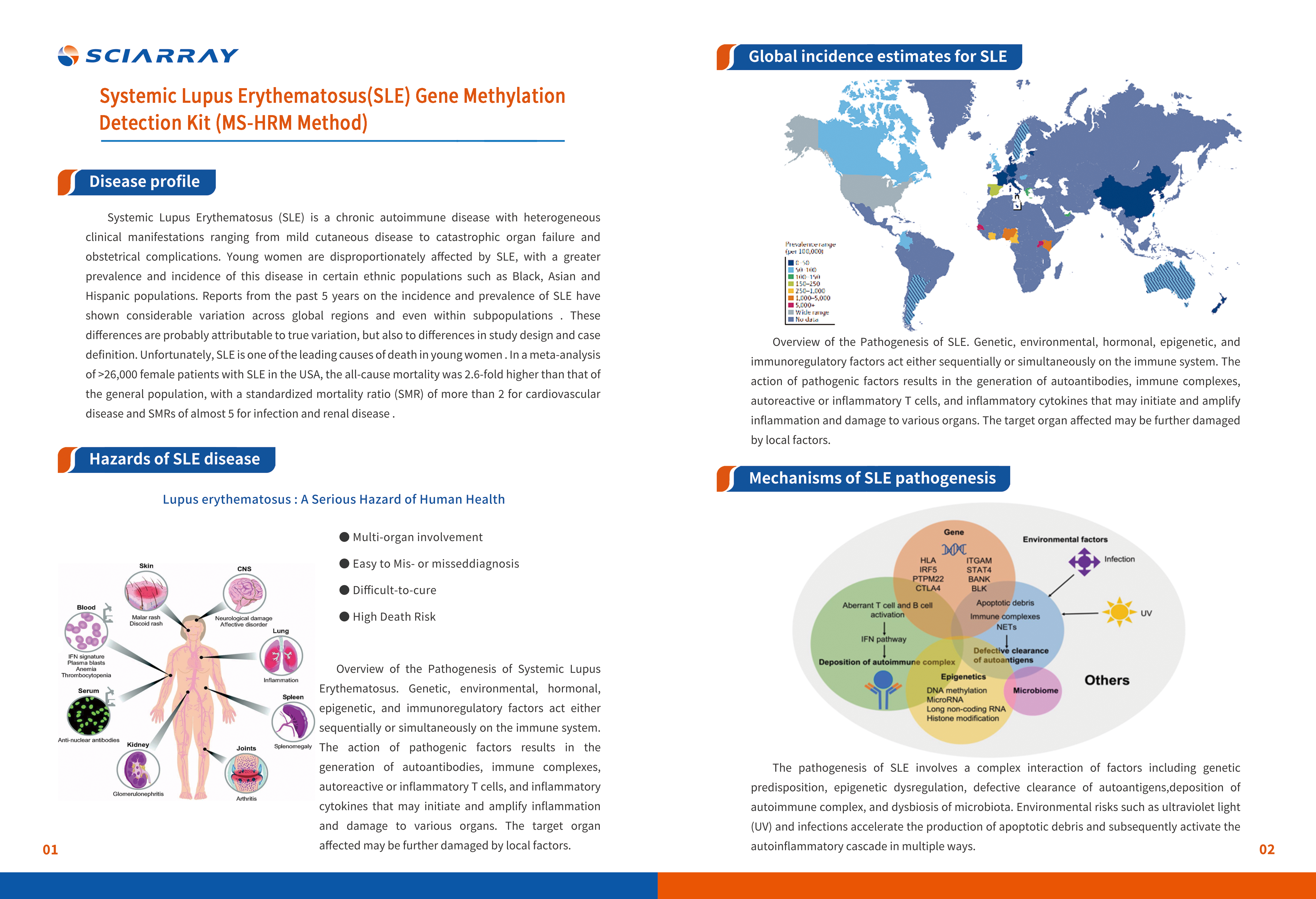Products and Solutions
Professional and more focused





Systemic lupus erythematosus (SLE) is a complicated autoimmune disease with female susceptibility. It is characterized byover-activation of the immune system and deposit of autoimmune complex in multiple organs. High heterogeneity, unpredictable disease course of SLE as well as the lack of specific and sensitive biomarkers posed diagnostic challenges to clinicians.
Manual download

1.early diagnosis
2.differential diagnosis
3.High sensitivity
4.High specificity
5.Medication guidance

Tel
Tel
+86 (0)755-26623699
26625938


